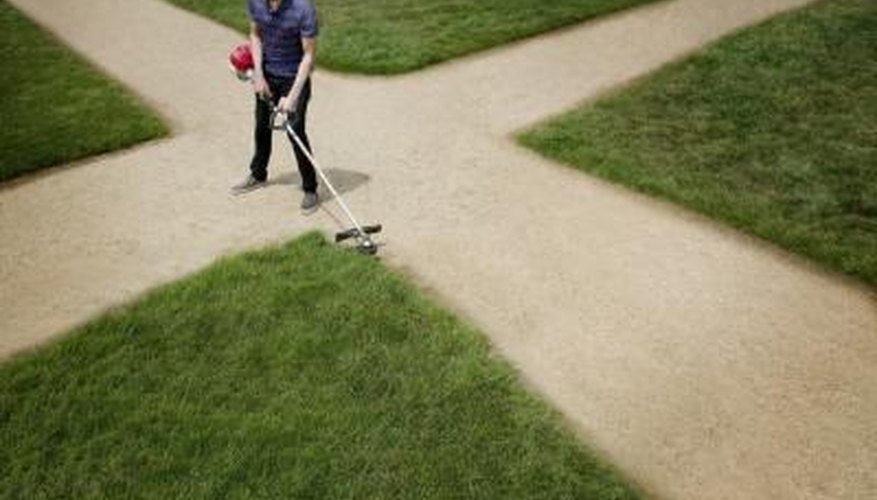A weed trimmer is a lawn-care device that utilises a small gasoline engine to turn a rotary device at the end of a long wand to cut weeds and grass. A user can trim along a sidewalk or around a tree while standing. The engine of a weed trimmer can last longer than the rest of the device and can be utilised as a power source for other do-it-yourself projects, such as a bicycle.
- A weed trimmer is a lawn-care device that utilises a small gasoline engine to turn a rotary device at the end of a long wand to cut weeds and grass.
- The engine of a weed trimmer can last longer than the rest of the device and can be utilised as a power source for other do-it-yourself projects, such as a bicycle.
Take off the weed trimmer motor; typically, a set screw will secure the motor. You will have to attach a gear to the motor shaft. You can buy such a gear at any large hardware or home improvement store. Take the motor to the store to make sure that you can attach the gear to the shaft. Also, take a length of bicycle chain to the store to make sure that the gear teeth engage the chain properly.
Build a mount to attach the motor to the bicycle. You can mount the motor over the back wheel, just behind the seat, or on the frame above the pedals. In either position, you will have to build a frame of one or two strips of metal that can be bolted onto the bicycle frame and onto which the motor can be bolted. Mounting the motor over the back wheel is easier and safer than above the pedals but makes it more difficult to control the motor. A clutch should be utilised to disengage the engine temporarily and an on-off switch should also be used. It's easier for the rider to use these controls if the motor is mounted over the pedals. These two controls already exist on most weed trimmers.
- Build a mount to attach the motor to the bicycle.
- Mounting the motor over the back wheel is easier and safer than above the pedals but makes it more difficult to control the motor.
Test the new assembly thoroughly before you go for a ride. Before you put on the chain, you should start the engine and make sure that it runs freely and does not vibrate excessively or shake loose from the bicycle. Turn off the motor and put on the chain. You may have to add and remove links to make the chain fit snugly with a small amount of play. Firmly block the bicycle with the back wheel free to move and start the engine. The wheel should rotate freely with no scraping sounds and the controls should work properly.
TIP
If you mount the engine over the rear wheel, you can make the clutch accessible by running a cable from the clutch to a small lever mounted on the bicycle frame at a place where it is easily accessible to the rider.
WARNING
Gears with small teeth are cheaper but the chains come off the gears more than if the chain has larger teeth.
